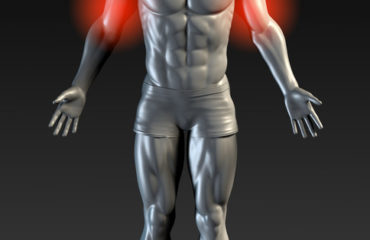 A recent study has shown that the treatment of shoulder calcifications needs to be done according to the kind of calcifications and the extent of deposition. The study was published in Radiology and it pressed on the need of determining whether a single or dual needles need to be used for removing calcifications from the shoulder area.
A recent study has shown that the treatment of shoulder calcifications needs to be done according to the kind of calcifications and the extent of deposition. The study was published in Radiology and it pressed on the need of determining whether a single or dual needles need to be used for removing calcifications from the shoulder area.
The study was conducted in relation to a certain calcification condition known as rotator cuff calcific tendinopathy.
In this condition, these four joints are hindered in their function by the accumulation of calcium on their surface. It is due to these calcified shoulder joints that the patient feels pain in the area and has localized mobility issues.
The extent of calcific tendonitis can either be mild or so strong that it may lead to disability, preventing using the arms freely. Of all the types of shoulder pain ever encountered, 20% are due to this condition, which makes this condition more common than one would assume.
This research was conducted by the University of Milan under the headship of Dr. Sconfienza. She said that there is no final decision on the best treatment for calcified shoulder joints but percutaneous irrigation was the method that is employed extensively.
Treatment Method
This method involves the insertion of a saline solution into the affected area. The salts in this solution aid in the dissolution of calcium deposits which are then removed from the body in form of a fluid. This treatment has plenty of benefits such as being:
- Minimally invasive
- Quick
- And has very few complications associated with it
The treatment is monitored through ultrasound to ensure that only the calcium deposits on the tendons are dissolved and no harm is inflicted upon the calcium present in the bones. Dr. Sconfienza also said that till now, no research has been conducted to distinguish the situations in which one needle is to be used from the ones in which two needles are needed.
Features of the Study
This study is focused on learning about the use of needles for specific shoulder calcifications. Salient features of the study include the following:
- There were 211 patients involved in the study
- All patients were aged in the range of 24 to 69
- 77 of the patients were men while 134 were women
- They underwent the treatment for two years, from 2012 to 2014
During this time, they were given single needle and double needle treatments alternately. The single needle treatment used a single 18 gauge needle to insert the saline fluid in the body and to extract the dissolved calcium.
On the other hand, two 16 gauge needles for used for the double needle treatment. Dr. Sconfienza added that, “Calcium dissolution was easier when using two needles for hard calcifications and one needle for fluid calcifications”.
Clinical exams showed no difference in results of single and dual needle treatments and neither did any new calcifications appear at the location of rotator cuff after a year of each treatment.



